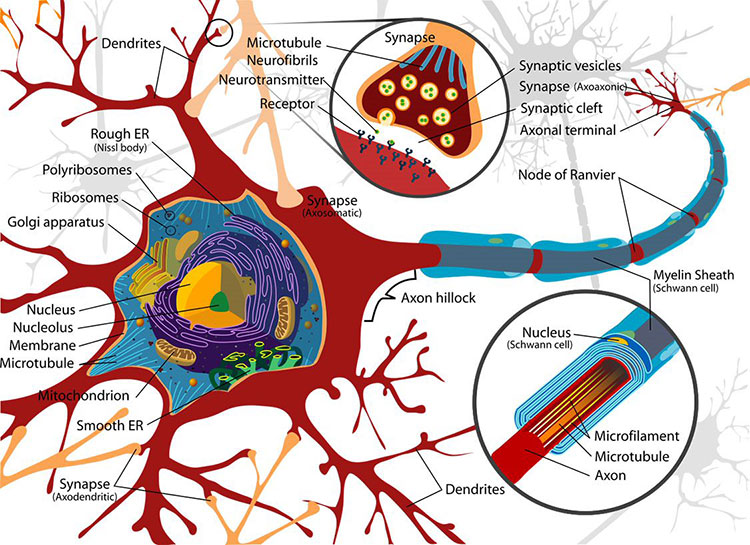Logic puzzles are always a great way to test our problem-solving skills and attention to detail. The image above presents a deceptively simple challenge: out of the seven cups shown, which one will fill up first? At first glance, it might seem like an easy question, but if you’re not careful, you might end up with the wrong answer. Ready to take on the challenge?

Why This Puzzle Tricks So Many People
At first, most people glance at the image and rush to answer. They might choose the cup closest to the teapot or the one that appears to have the shortest path. However, this puzzle isn’t as straightforward as it seems.
One of the most common mistakes people make is ignoring the blocked paths. The diagram cleverly includes sections where pipes are blocked or sealed, preventing water from flowing to certain cups. If you don’t pay close attention to these details, you’re likely to pick the wrong cup.
Another mistake is assuming that all paths are open and functional. Our brains are wired to think in terms of simplicity and efficiency, which often leads to us overlooking small barriers or obstructions in a puzzle like this.
The takeaway? Details matter. To solve puzzles like this, slowing down and carefully analyzing each component is crucial.
Step-by-Step Guide to Solving the Puzzle
Let’s solve this puzzle together. Grab a cup of tea (or coffee) and focus on the diagram. We’ll analyze the flow of water step by step.
- Start from the Source
The teapot is pouring water into the topmost pipe. From here, the water will naturally follow gravity, flowing down into the first available path. But not all paths are open. - Follow the Flow
The water flows down the central pipe and begins to branch out toward different cups. However, not all cups will receive water because some pathways are blocked. - Analyze the First Branch
As the water moves downward, it reaches the first branching point. This branch splits into two directions:- To the left, it leads toward cup 5.
- To the right, it leads toward cups 4 and 6.
- Check the Right Branch
Moving to the right, the water encounters two more pathways:- One path leads to cup 4, but it is also blocked at the base, preventing water from reaching the cup.
- The second path leads directly to cup 6.
- Confirm the Flow
Once the water reaches cup 6, it will fill up. No other cup can intercept the water because all other paths are blocked.
The Final Answer: Cup 6

So, the correct answer to this puzzle is cup 6. It’s the only cup with an unobstructed path for the water to flow into. Cups 4 and 5, despite being closer in appearance, are blocked and cannot fill up first.
Why Puzzles Like This Are Great for Your Brain
Puzzles like this aren’t just fun—they’re also an excellent way to sharpen your problem-solving skills and boost your logical thinking. Here are a few benefits of tackling logic puzzles:
- Improved attention to detail: Small details often make the biggest difference, as seen in this puzzle.
- Enhanced critical thinking: Analyzing each component step by step trains your brain to approach problems methodically.
- Patience and persistence: Puzzles teach us to slow down and think things through rather than rushing to conclusions.
By practicing regularly with puzzles like this, you can develop sharper analytical skills and even apply them to real-life situations.
Share Your Thoughts and Join the Conversation!
Did you guess the right answer? Or did the blocked paths trick you? Share your reasoning in the comments and let us know which cup you thought would fill up first.
If you enjoyed solving this puzzle, why not challenge your friends and family to see if they can figure it out too? Share this article with them and compare your answers. You might be surprised at how many people miss the small details!
Conclusion: Keep Sharpening Your Mind
Puzzles like this are a fun reminder that things aren’t always what they seem. They challenge us to look beyond the obvious and consider every detail before reaching a conclusion.
So, next time you encounter a tricky riddle or logic puzzle, take a deep breath, slow down, and analyze the situation step by step. Who knows? You might discover that you’re better at solving these challenges than you thought.
Ready for your next brain teaser? Stay curious, keep challenging yourself, and embrace the joy of problem-solving!
Synaptic Information Storage Capacity Measured With Information Theory
Ever wondered just how much data your brain can hold? We often compare the brain to a supercomputer, but what if that comparison isn’t just a metaphor—it’s literal? Deep within your brain, at the junctions where neurons meet, lies an extraordinary form of biological storage: the synapse. And thanks to breakthroughs in information theory, we’re beginning to quantify its staggering capacity.
In this article, we’ll dive into how synaptic storage works, how scientists measure it, and why this knowledge could shape the future of data storage—from artificial intelligence to DNA-based memory.
What Are Synapses and Why Are They Important?

Think of neurons as the brain’s messengers. But without synapses—the gaps between them where signals are transmitted—those messages would go nowhere. A synapse is where the magic happens: it’s the space where one neuron sends a chemical or electrical signal to another, sparking thoughts, memories, movements, and more.
Now here’s the kicker: each of these tiny junctions doesn’t just pass along data—it stores it.
Your brain has about 86 billion neurons, and each one can form around 1,000 synapses. That’s a total of roughly 125 trillion synapses buzzing away in your brain, constantly sending and receiving signals. These connections form the foundation of your memories, knowledge, and perception.
Measuring Synaptic Storage with Information Theory
To understand how synapses store information, scientists turn to information theory—a branch of mathematics that deals with encoding, decoding, and compressing data. Think of it like analyzing how much a hard drive can hold, but on a biological scale.
Video : 2-Minute Neuroscience: Synaptic Transmission
Each synapse, as it turns out, can store up to 4.7 bits of information. That might not sound like much until you consider the scale:
- 1 bit is a single piece of binary data (a 0 or 1)
- 4.7 bits per synapse × 125 trillion synapses = over 500 trillion bits of potential storage
Translated into digital terms, your brain can theoretically store more data than the entire internet—all in a compact, low-energy package powered by biology.
The Brain’s Efficiency: Powering Trillions of Connections
Here’s something even more mind-blowing: while your laptop heats up and guzzles electricity, your brain handles all of this complex storage and processing using roughly 20 watts of power—that’s about the same as a dim light bulb.
This insane efficiency is what’s inspiring researchers to build neural networks and deep learning systems that mimic the brain. If computers could process and store data like synapses do, we’d have faster, smarter, and greener technology.
Artificial Intelligence and Synaptic Models
The field of AI, especially machine learning and deep learning, borrows heavily from how the brain processes and stores information. Artificial neural networks use layers of interconnected nodes (inspired by neurons) to simulate learning.
But here’s where it gets interesting: researchers are now using real data about synaptic information capacity to refine these systems. The goal? To build AI models that are more human-like, not just in intelligence but in efficiency and adaptability.
Imagine a future where your smartphone thinks and stores information with the same elegance as your brain. That future isn’t science fiction—it’s science.
Beyond the Brain: DNA as the Ultimate Storage Device
While the brain remains the pinnacle of biological storage, it’s not the only game in town. Enter DNA, nature’s original information vault.
DNA doesn’t just code for life—it can be used to store digital data. And we’re not talking small files here. A single gram of DNA can hold up to 215 petabytes of data. That’s 215 million gigabytes—enough to store every photo, song, and document you’ve ever owned, plus millions more.
In fact, researchers have already done it. In one groundbreaking study, scientists encoded a 52,000-word book into synthetic DNA. They converted the digital content into binary (0s and 1s), then translated those digits into DNA’s four-letter alphabet: A, T, G, and C. The result? A physical strand of DNA holding a complete, retrievable digital file.
Why DNA Storage Matters for the Future
Traditional storage devices—hard drives, SSDs, even cloud servers—have physical limits. They degrade over time and take up massive amounts of space. DNA, on the other hand, is incredibly compact, durable, and stable for thousands of years if stored properly.
If scaled correctly, DNA storage could revolutionize how we preserve knowledge. Imagine backing up the entire contents of the Library of Congress on something no bigger than a sugar cube. That’s the level we’re talking about.
Video : How Your Brain Remembers: Neurons & Synapses Explained!
Bridging Biology and Technology
What’s exciting is how these two areas—brain synapses and DNA storage—are starting to intersect. Both are nature’s proof that small-scale systems can handle mind-blowing amounts of data. As scientists continue to decode these systems using information theory, they’re finding ways to integrate them into technology.
It’s not about replacing computers with brains or turning DNA into a USB drive. It’s about learning from nature’s most efficient designs to build the next generation of computing and storage systems.
Conclusion: Reimagining Storage in a Biological World
Your brain’s 125 trillion synapses silently store and process more information than entire server farms, all while sipping on 20 watts of energy. Meanwhile, DNA—the code of life—is showing us how to pack massive libraries of data into microscopic strands.
By measuring synaptic storage capacity with information theory, we’re not just understanding the brain better—we’re laying the foundation for a new era of intelligent, efficient technology.
The takeaway? Nature has already solved problems we’re only beginning to understand. And the more we study it, the closer we get to unlocking the true potential of both our minds and our machines.



Leave a Reply